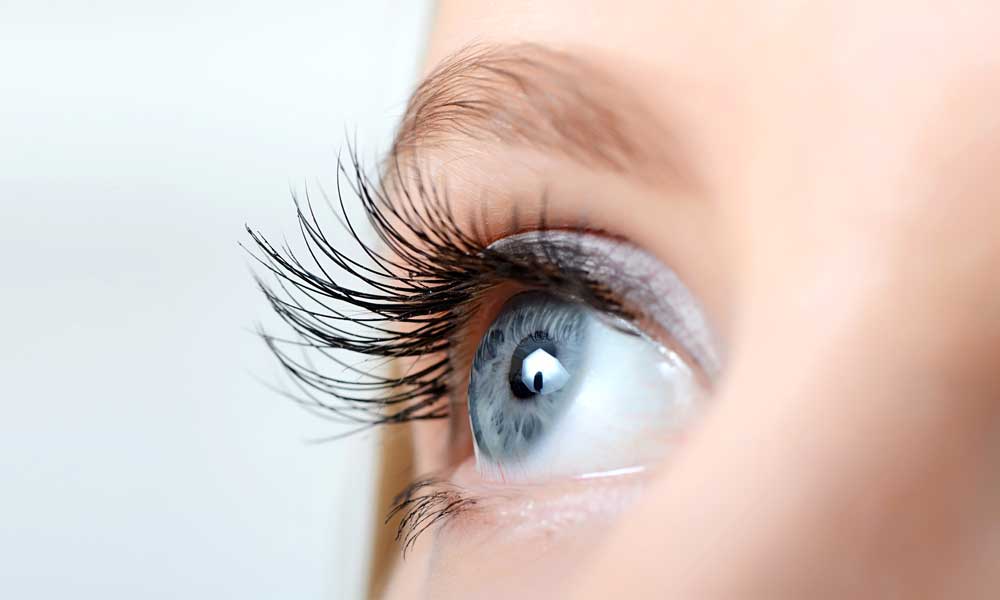Health News: In the Blink of an Eye
If you’re staring at a screen all day, be sure to take blink breaks.

-
Cheek It OutRestylane Lyft is the latest FDA-approved hyaluronic acid filler for cheek augmentation. Clinical trials showed that 88.7 percent of those treated with the filler had improved fullness after two months, with more than half maintaining it at the one-year mark.Restylane Lyft is the latest FDA-approved hyaluronic acid filler for cheek augmentation. Clinical trials showed that 88.7 percent of those treated with the filler had improved fullness after two months, with more than half maintaining it at the one-year mark.
-
10The number of grams of grain-based fiber (think oats and quinoa) you need to eat daily to cut your risk of Type 2 diabetes by 25 percent. —DiabetologiaThe number of grams of grain-based fiber (think oats and quinoa) you need to eat daily to cut your risk of Type 2 diabetes by 25 percent. —Diabetologia
-
Weight For ItPlaying catch with weighted medicine balls has been shown to improve balance and may help prevent falls as we age. —University of Illinois at ChicagoPlaying catch with weighted medicine balls has been shown to improve balance and may help prevent falls as we age. —University of Illinois at Chicago
-
In the Blink of an EyeIf you’re staring at a screen all day, be sure to take blink breaks. A recent study has found that the more screen time we clock, the less lubricating substance our eyes make. Why? Researchers say we blink less when doing screen work. Ordinarily we blink 15 to 20 times per minute, they say, but that rate is cut by up to one-half when we use digital devices.If you’re staring at a screen all day, be sure to take blink breaks. A recent study has found that the more screen time we clock, the less lubricating substance our eyes make. Why? Researchers say we blink less when doing screen work. Ordinarily we blink 15 to 20 times per minute, they say, but that rate is cut by up to one-half when we use digital devices.
-
An Apple a Day…Keeps the cardiologist away? Very likely. According to the Iowa Women’s Health Study, apples are associated with a lower risk of death from cardiovascular disease. They contain antioxidant compounds, which control inflammation, are a good source of vitamin C and provide pectin, a soluble fiber that has been shown to help lower LDL (“bad”) cholesterol levels.Keeps the cardiologist away? Very likely. According to the Iowa Women’s Health Study, apples are associated with a lower risk of death from cardiovascular disease. They contain antioxidant compounds, which control inflammation, are a good source of vitamin C and provide pectin, a soluble fiber that has been shown to help lower LDL (“bad”) cholesterol levels.
-
-
4.2The number of times more likely you are to catch a cold after being exposed to the virus if you sleep fewer than six hours nightly. —Carnegie Mellon UniversityThe number of times more likely you are to catch a cold after being exposed to the virus if you sleep fewer than six hours nightly. —Carnegie Mellon University
-
300The number of minutes per week it’s recommended that postmenopausal women exercise—at moderate to vigorous levels—to reduce their risk of breast cancer. —JAMA OncologyThe number of minutes per week it’s recommended that postmenopausal women exercise—at moderate to vigorous levels—to reduce their risk of breast cancer. —JAMA Oncology
-
Telltale Sign of Arthritis?Check out your ring fingers. If they’re longer than your index fingers, you could be at an increased risk of knee osteoarthritis, according to a 2014 study of 14,500 adults. Researchers theorize that this trait may be linked to the effect of hormones on the growth of bone and cartilage. —RheumatologyCheck out your ring fingers. If they’re longer than your index fingers, you could be at an increased risk of knee osteoarthritis, according to a 2014 study of 14,500 adults. Researchers theorize that this trait may be linked to the effect of hormones on the growth of bone and cartilage. —Rheumatology
-
Stand Up!Being sedentary has been found to be twice as deadly as being obese, so get moving. Even a daily 20-minute walk is enough to reduce chances of early death by 30 percent. —American Journal of Clinical NutritionBeing sedentary has been found to be twice as deadly as being obese, so get moving. Even a daily 20-minute walk is enough to reduce chances of early death by 30 percent. —American Journal of Clinical Nutrition

